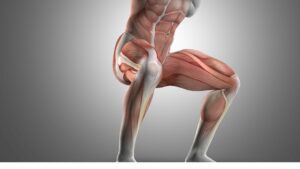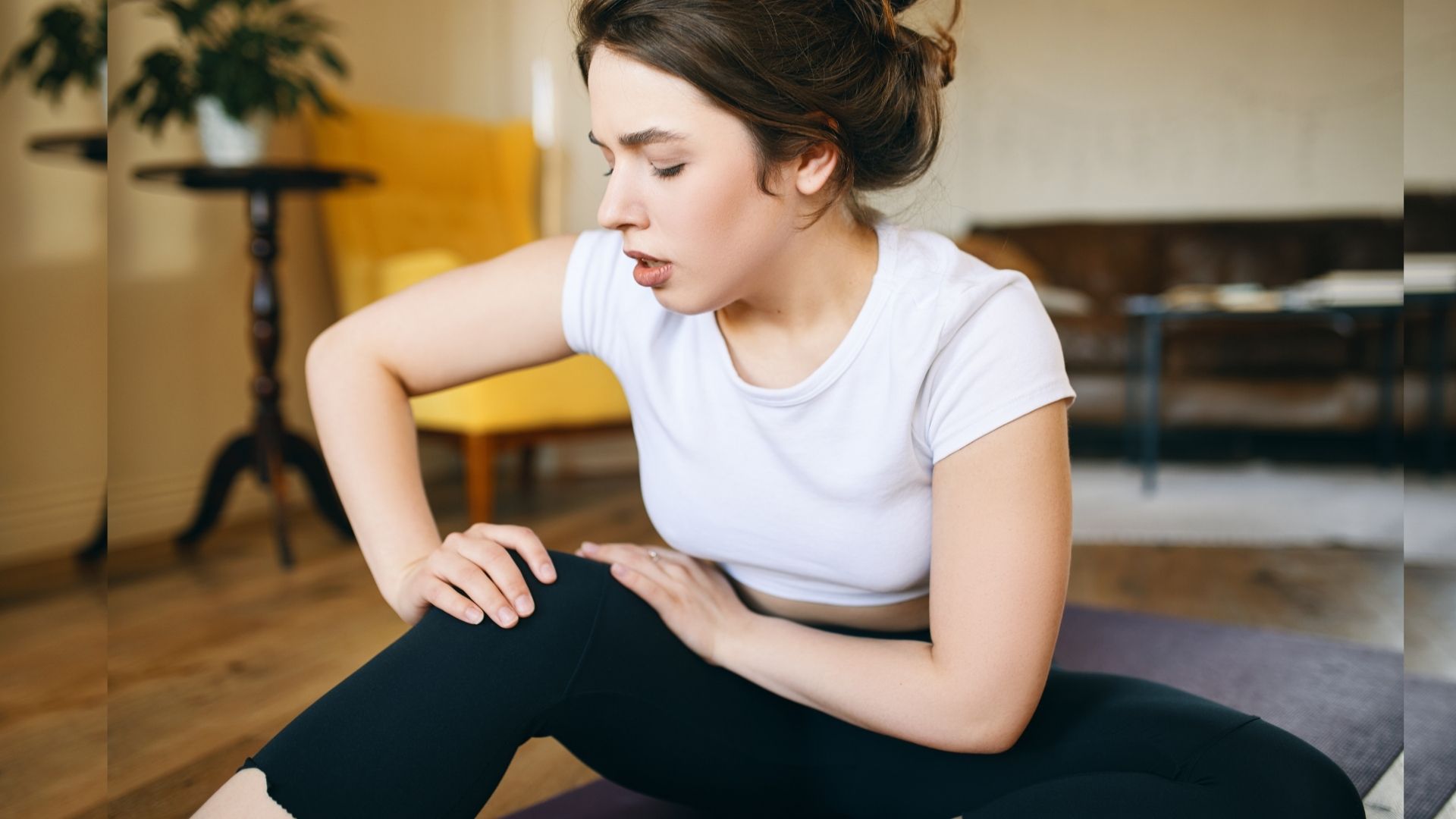Many often wonder why they feel a burning sensation specifically in their quadriceps when doing squats.
In this article, we will explore the reasons behind this phenomenon and shed light on the benefits of incorporating squats into your fitness routine.
During squats, the quadriceps contract to straighten your legs and generate the force to push your body up. As you lower into the squat, the quadriceps lengthen, and when you rise, they contract, causing stress and a burning sensation. Squats engage multiple muscles, including the glutes and hamstrings. The burn in your quadriceps is due to lactic acid buildup from intense exercise. Sharp pain or discomfort should be addressed by a healthcare professional.
Here’s an expanded explanation of why squats make you feel a burn in your quadriceps, along with examples:
Quadriceps muscles are heavily engaged.
Squats are a popular and effective exercise that targets various muscle groups in your lower body, with the quadriceps being one of the primary muscles involved.
The quadriceps, located at the front of your thighs, consist of four muscles: the vastus lateralis, vastus medialis, vastus intermedius, and rectus femoris.
These muscles play a crucial role in knee extension, which is the straightening of your legs.
During a squat, as you lower your body down, your quadriceps muscles undergo an eccentric contraction. This means that they are lengthening while under tension.
As your knees bend and your hips shift back, the quadriceps actively control the movement and work to decelerate your descent. This eccentric phase of the squat is when the quadriceps are stretched, and it places significant demand on these muscles.
When you initiate the upward movement in a squat, your quadriceps contract concentrically. This contraction involves the shortening of the muscle fibers as they generate force to lift your body back to the starting position.

Quadriceps work in coordination with other muscles.
The quadriceps work in coordination with other muscles such as the glutes, hamstrings, and calves to provide stability and support during the movement. This synergistic effort further intensifies the demand placed on your quadriceps.
To illustrate this further, let’s consider an example. Imagine you are performing a barbell squat.
As you descend, your quadriceps muscles lengthen to control the lowering phase, while your glutes and hamstrings provide additional support. When you reach the bottom of the squat and begin to rise, your quadriceps contract forcefully to extend your knees and push your body upward.
Throughout this movement, your quadriceps work alongside the other muscles to maintain balance and stability.
The burn you experience in your quadriceps during squats can be attributed to various factors, including metabolic byproducts and muscle fatigue.
One such byproduct is lactic acid, which is produced during intense exercise when the muscles are working without sufficient oxygen supply. The accumulation of lactic acid can contribute to the burning sensation and fatigue in your quadriceps.
As you continue to perform squats, your quadriceps undergo metabolic stress and fatigue due to the high-intensity nature of the exercise.
This fatigue can be caused by the depletion of energy stores, such as glycogen, within the muscle fibers.
Additionally, the repeated eccentric and concentric contractions during squats lead to microtrauma in the muscle fibers. This microtrauma triggers an adaptive response in the body, causing the muscles to repair and grow stronger over time.
Squats engage multiple muscles.
To further exemplify, let’s consider another scenario. Imagine you incorporate squat jumps into your workout routine.
Squat jumps involve explosively jumping up from a squatting position. During this exercise, your quadriceps contract rapidly and forcefully to generate enough power for the jump. The repeated explosive contractions and the impact upon landing create a significant demand on your quadriceps, leading to a burn and fatigue.
It’s important to recognize that feeling a burn in your quadriceps during squats is a normal response to the exercise, indicating that your muscles are being challenged and worked effectively.
However, it’s crucial to maintain proper form and technique to ensure optimal engagement of the quadriceps and minimize the risk of injury.
Burning quadriceps is due to lactic acid buildup.
In summary, squats engage the quadriceps muscles through a combination of eccentric and concentric contractions.
The quadriceps play a vital role in knee extension and work in conjunction with other muscles to support your body during squats.
The burn you feel in your quadriceps is a result of the intense effort, metabolic byproducts like lactic acid, and muscle fatigue.
Regular practice of squats can lead to strength gains and muscle growth in your quadriceps and other lower body muscles.
Remember to consult a healthcare professional if you experience sharp pain or discomfort beyond the usual burn associated with exercise.
Here’s a table summarizing the key aspects of squats:
| Aspect | Description |
|---|---|
| Why | Squats engage the quadriceps to extend the knee joint, generate force for pushing up from a squatting position, and target multiple lower body muscles. They promote strength, muscle growth, and overall lower body development. |
| How | Squats involve lowering your body by bending your knees and hips while keeping your back straight, then rising back up by extending your knees and hips. They can be performed with bodyweight, barbells, dumbbells, or other equipment, and variations like front squats or sumo squats provide different emphases. |
| When | Squats can be incorporated into strength training workouts, leg-focused routines, or as part of a full-body workout. They can be done by individuals at various fitness levels, but proper form, technique, and progression are important to avoid injury and maximize benefits. |
| Where | Squats can be performed in various settings such as gyms, fitness centers, home gyms, or outdoor spaces. They require enough space to move freely and can be done using squat racks, benches, or other suitable platforms for safety and stability. |
| Examples | Examples of squats include bodyweight squats, barbell squats, goblet squats, front squats, sumo squats, and pistol squats. Each variation targets the quadriceps and other lower body muscles to different degrees, offering versatility and options for individual preferences and goals. |
| Consider | It’s important to consider factors such as proper form, suitable weights or resistance, warm-up exercises, gradual progression, and listening to your body. Consulting a fitness professional, using appropriate equipment, and understanding your personal limitations and goals are also essential. |
Conclusion.
In conclusion, squats are a highly effective exercise for engaging and strengthening the quadriceps, along with other lower body muscles.
They provide numerous benefits such as increased strength, muscle growth, and overall lower body development.
By understanding why, how, when, and where to perform squats, and considering factors like proper form, suitable progression, and individual limitations, you can optimize the results and minimize the risk of injury.
Whether you’re a beginner or an experienced fitness enthusiast, incorporating squats into your workout routine can help you achieve your fitness goals.

Hey there, it’s Mike Rrsq, the Editor-in-Chief over at Jsquat.com, and I’m absolutely obsessed with all things squat fitness! I’ve been lucky enough to get some serious recognition for my work in this field. With a solid background in the fitness and wellness industry, I’ve been there right from the get-go, helping shape this website into what it is today.
You see, I’m not just the boss around here; I’m also a passionate contributor. I love sharing my insights through my articles, and trust me, they’re not your run-of-the-mill stuff. Each piece I write is a labor of love, filled with my expertise and real-world experience in the fitness universe. So, if you’re into fitness and looking for some inspiration, you’re in the right place!

